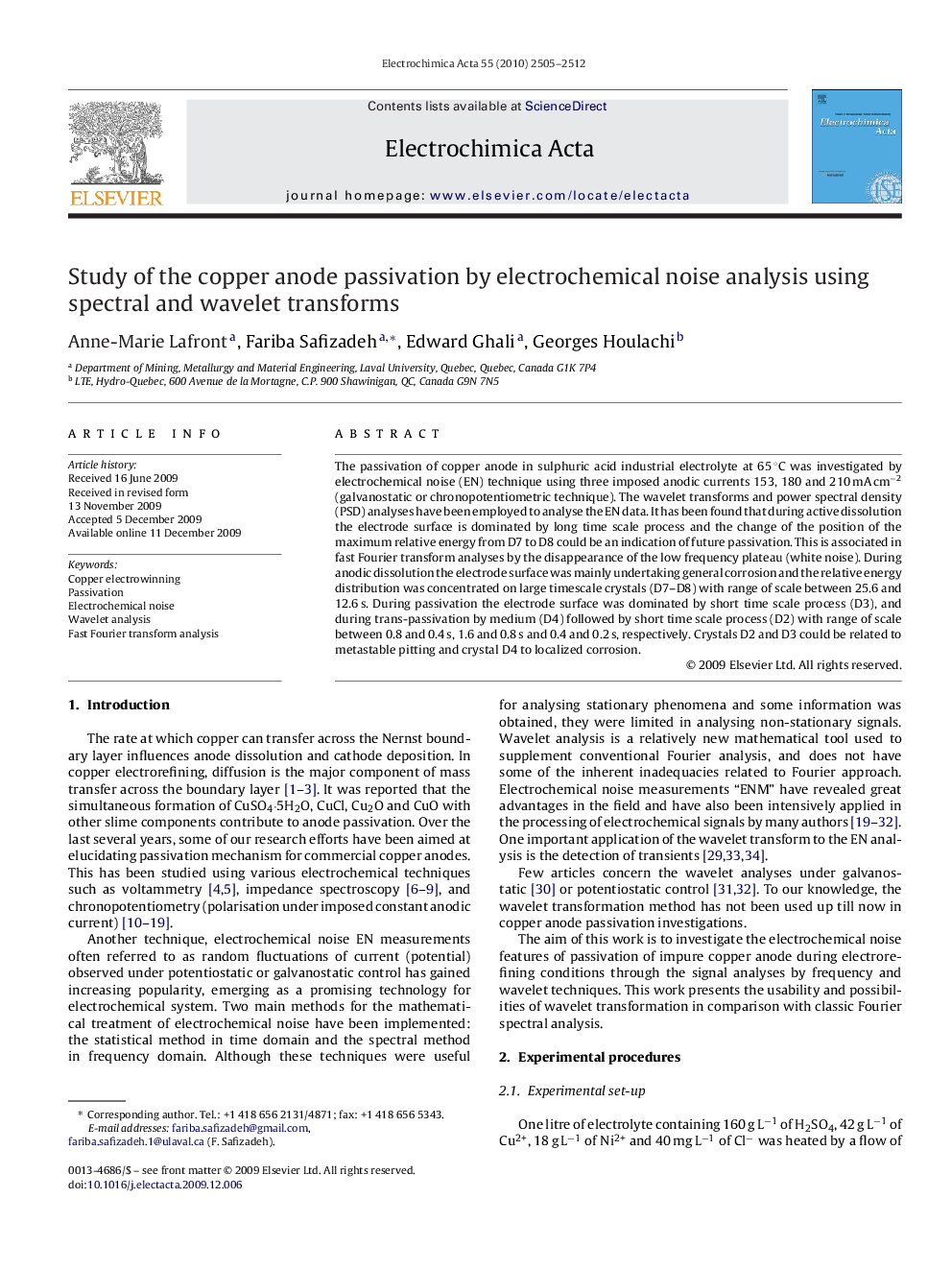| Article ID | Journal | Published Year | Pages | File Type |
|---|---|---|---|---|
| 191890 | Electrochimica Acta | 2010 | 8 Pages |
The passivation of copper anode in sulphuric acid industrial electrolyte at 65 °C was investigated by electrochemical noise (EN) technique using three imposed anodic currents 153, 180 and 210 mA cm−2 (galvanostatic or chronopotentiometric technique). The wavelet transforms and power spectral density (PSD) analyses have been employed to analyse the EN data. It has been found that during active dissolution the electrode surface is dominated by long time scale process and the change of the position of the maximum relative energy from D7 to D8 could be an indication of future passivation. This is associated in fast Fourier transform analyses by the disappearance of the low frequency plateau (white noise). During anodic dissolution the electrode surface was mainly undertaking general corrosion and the relative energy distribution was concentrated on large timescale crystals (D7–D8) with range of scale between 25.6 and 12.6 s. During passivation the electrode surface was dominated by short time scale process (D3), and during trans-passivation by medium (D4) followed by short time scale process (D2) with range of scale between 0.8 and 0.4 s, 1.6 and 0.8 s and 0.4 and 0.2 s, respectively. Crystals D2 and D3 could be related to metastable pitting and crystal D4 to localized corrosion.
